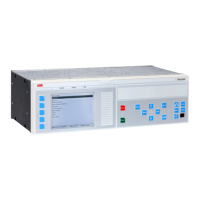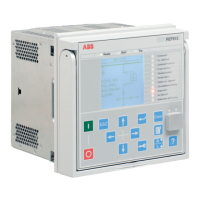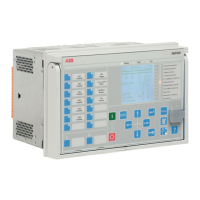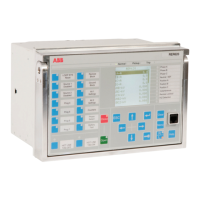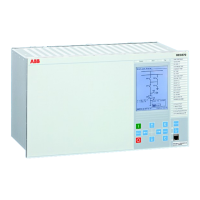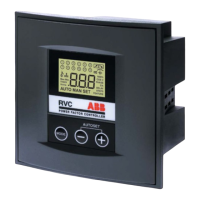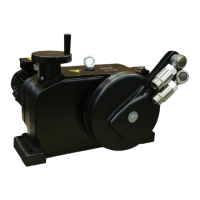Section 3 1MAC309294-MB F
Basic functions
56 RER620
Technical Manual
3.8.3 Oscillation suppression
Oscillation suppression is used to reduce the load from the system when a binary input
starts oscillating. A binary input is regarded as oscillating if the number of valid state
changes (= number of events after filtering) during one second is equal to or greater than
the set oscillation level value. During oscillation, the binary input is blocked (the status is
invalid) and an event is generated. The state of the input will not change when it is blocked,
that is, its state depends on the condition before blocking.
The binary input is regarded as non-oscillating if the number of valid state changes during
one second is less than the set oscillation level value minus the set oscillation hysteresis
value. Note that the oscillation hysteresis must be set lower than the oscillation level to
enable the input to be restored from oscillation. When the input returns to a non-oscillating
state, the binary input is deblocked (the status is valid) and an event is generated.
Table 38: Oscillation parameter values
3.9 GOOSE function blocks
GOOSE function blocks are used for connecting incoming GOOSE data to application.
They support BOOLEAN, Dbpos, Enum, FLOAT32, INT8 and INT32 data types.
Common signals
The VALID output indicates the validity of received GOOSE data, which means in case
of valid, that the GOOSE communication is working and received data quality bits (if
configured) indicate good process data. Invalid status is caused either by bad data quality
bits or GOOSE communication failure. See IEC 61850 engineering guide for details.
The OUT output passes the received GOOSE value for the application. Default value (0)
is used if VALID output indicates invalid status. The IN input is defined in the GOOSE
configuration and can always be seen in SMT sheet.
Settings
The GOOSE function blocks do not have any parameters available in LHMI or PCM600.
Parameter Values Default
Input osc. level 2...50 events/s 50 events/s
Input osc. hyst. 2...50 events/s 10 events/s
